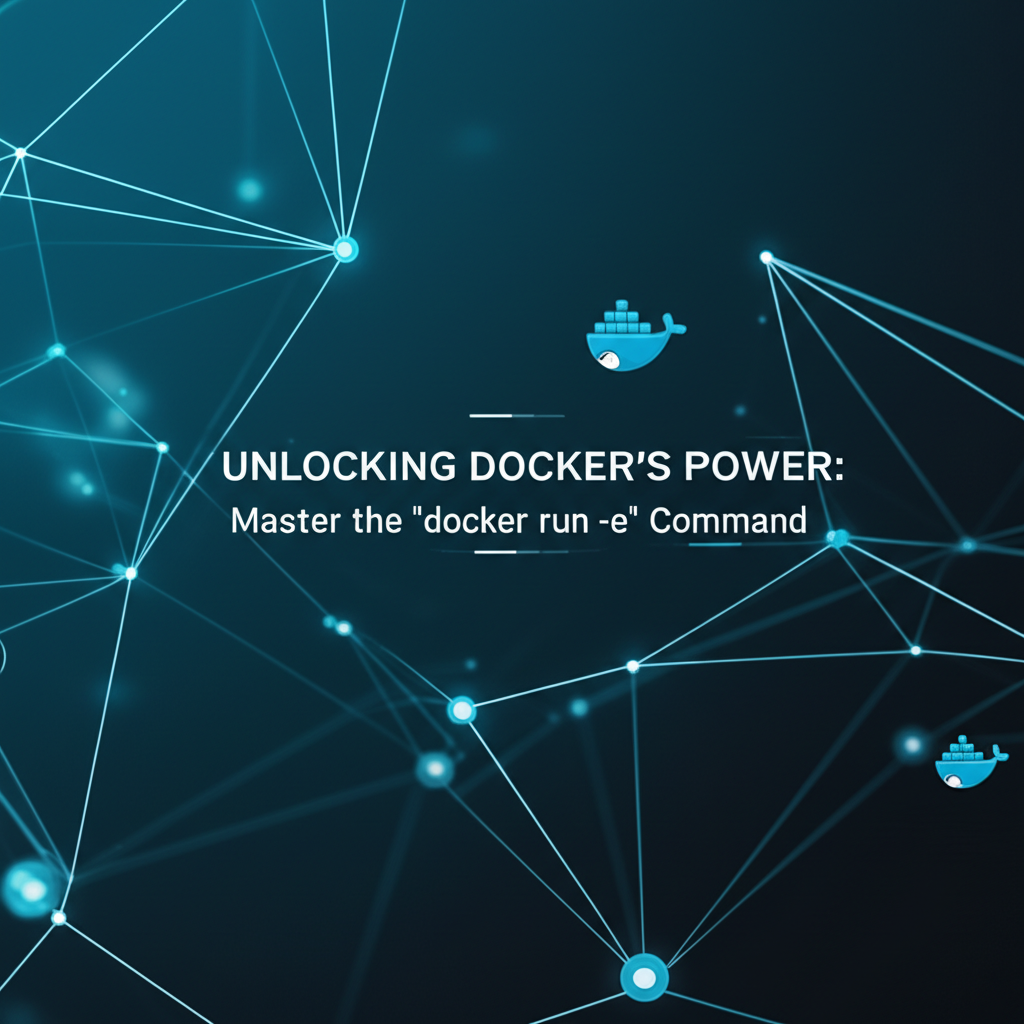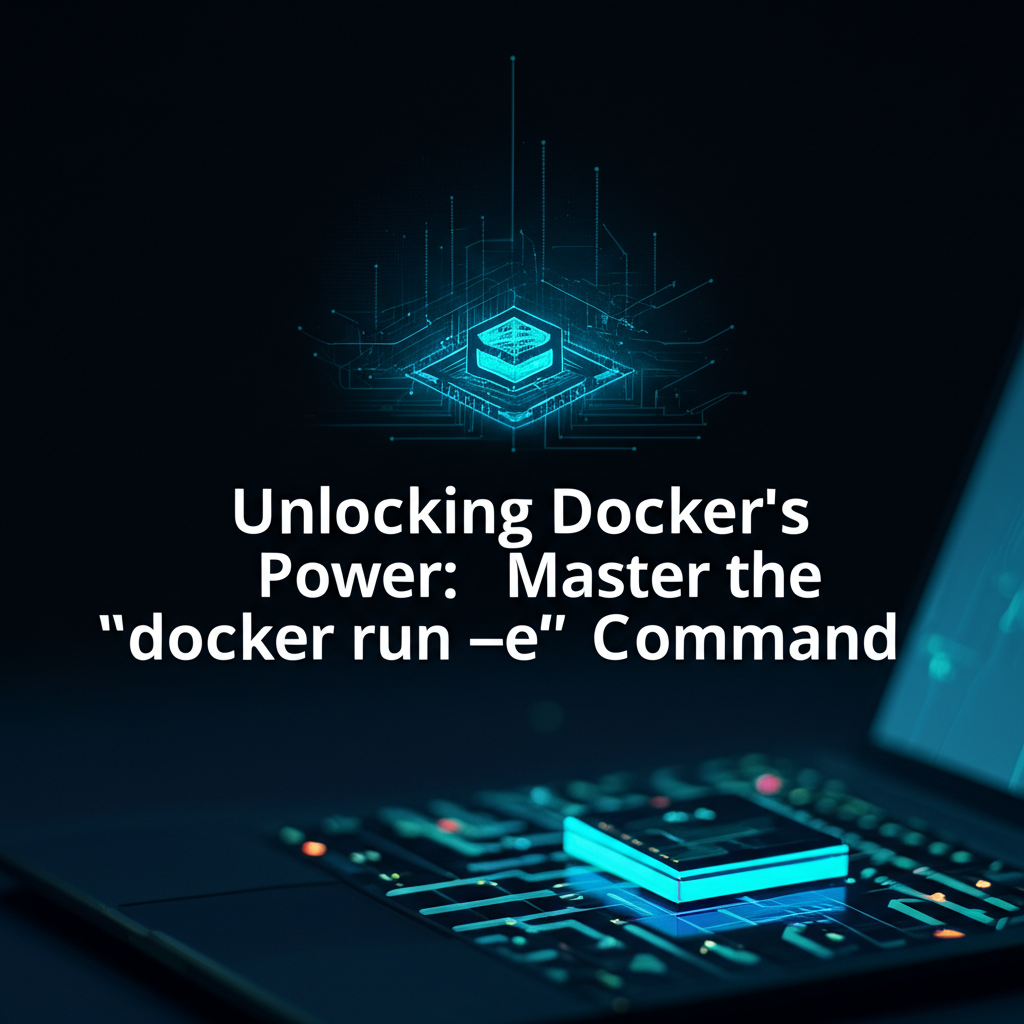Unlocking Docker's Power: Master the 'docker run -e' Command

Docker, the leading containerization platform, has revolutionized the way applications are deployed and managed. One of the most powerful and versatile commands in Docker is docker run -e. This command allows you to set environment variables for your containers, which can be crucial for the smooth operation of your applications. In this comprehensive guide, we will delve into the docker run -e command, its usage, and how it can be effectively utilized to enhance the performance and functionality of your Docker containers.
Understanding Environment Variables in Docker
Before we dive into the docker run -e command, it's essential to understand what environment variables are and how they work in Docker. Environment variables are key-value pairs that can be passed to a container, influencing its behavior or configuration. They can be used to store sensitive information, such as passwords or API keys, or to set configuration options for an application.
Types of Environment Variables
There are two types of environment variables in Docker:
- User-defined environment variables: These are set explicitly by the user during container creation.
- Build-time environment variables: These are set in the Dockerfile and are available to all layers of the image.
The docker run -e Command
The docker run -e command is used to set user-defined environment variables for a container. The -e flag is followed by the name of the environment variable and its value. For example:
docker run -e VAR_NAME=value -d my_image
This command creates a container from my_image and sets an environment variable named VAR_NAME with the value value.
Practical Use Cases of docker run -e
The docker run -e command has a wide range of applications in Docker. Here are some practical use cases:
1. Configuration Settings
Environment variables are a great way to pass configuration settings to your containers. For example, you might want to set the database connection string or the API key for an external service.
| Environment Variable | Description |
|---|---|
| DB_HOST | Database host address |
| DB_PORT | Database port number |
| API_KEY | API key for external services |
2. Sensitive Data
To enhance security, you can store sensitive information such as passwords or API keys in environment variables. This way, you don't need to store them in the container image or on the host system.
| Environment Variable | Description |
|---|---|
| DB_PASSWORD | Database password |
| SECRET_KEY | Application secret key |
3. Logging
Environment variables can be used to control the logging level or format for applications running in Docker containers.
| Environment Variable | Description |
|---|---|
| LOG_LEVEL | Logging level (e.g., DEBUG, INFO, WARN, ERROR) |
| LOG_FORMAT | Logging format (e.g., JSON, TEXT) |
4. Service Discovery
For microservices architectures, environment variables can be used to pass service discovery information to containers.
| Environment Variable | Description |
|---|---|
| SERVICE_HOST | Hostname of the service |
| SERVICE_PORT | Port number of the service |
APIPark is a high-performance AI gateway that allows you to securely access the most comprehensive LLM APIs globally on the APIPark platform, including OpenAI, Anthropic, Mistral, Llama2, Google Gemini, and more.Try APIPark now! 👇👇👇
Enhancing Docker Container Management with APIPark
While the docker run -e command is a powerful tool for managing environment variables in Docker containers, it's important to have a robust platform for container management. APIPark, an open-source AI gateway and API management platform, can significantly enhance your Docker container management experience.
APIPark and Docker Integration
APIPark provides a seamless integration with Docker, allowing you to manage your containers efficiently. With APIPark, you can:
- Deploy and manage Docker containers directly from the platform.
- Automate container orchestration using Kubernetes or other container orchestration tools.
- Monitor container performance and receive alerts in real-time.
Key Features of APIPark
Here are some key features of APIPark that make it an excellent choice for Docker container management:
- Quick Integration of 100+ AI Models: APIPark allows you to integrate various AI models with ease, making it a versatile platform for managing AI and REST services.
- Unified API Format for AI Invocation: APIPark standardizes the request data format across all AI models, ensuring seamless integration and easy maintenance.
- Prompt Encapsulation into REST API: Users can quickly create new APIs by combining AI models with custom prompts.
- End-to-End API Lifecycle Management: APIPark assists with managing the entire lifecycle of APIs, from design to decommission.
- API Service Sharing within Teams: APIPark allows for the centralized display of all API services, making it easy for different teams to find and use the required services.
Conclusion
The docker run -e command is a powerful tool for managing environment variables in Docker containers. By understanding its usage and practical applications, you can enhance the performance and functionality of your Docker applications. Additionally, integrating APIPark with your Docker environment can further streamline your container management process, making it easier to deploy, manage, and monitor your containers.
Frequently Asked Questions (FAQ)
- What is the purpose of the
docker run -ecommand? Thedocker run -ecommand is used to set environment variables for Docker containers, which can be crucial for the smooth operation of applications. - Can I set multiple environment variables using the
docker run -ecommand? Yes, you can set multiple environment variables using thedocker run -ecommand by separating them with spaces or commas. - Are environment variables persistent across container restarts? Environment variables set using the
docker run -ecommand are not persistent across container restarts. To make them persistent, you can use a Docker volume or mount a file containing the environment variables. - How can I manage environment variables for my Docker containers? You can manage environment variables for your Docker containers by using the
docker run -ecommand or by setting them in a Dockerfile. - What is APIPark and how does it integrate with Docker? APIPark is an open-source AI gateway and API management platform that allows you to manage Docker containers efficiently. It provides features like container deployment, orchestration, and monitoring, making it an excellent choice for Docker container management.
🚀You can securely and efficiently call the OpenAI API on APIPark in just two steps:
Step 1: Deploy the APIPark AI gateway in 5 minutes.
APIPark is developed based on Golang, offering strong product performance and low development and maintenance costs. You can deploy APIPark with a single command line.
curl -sSO https://download.apipark.com/install/quick-start.sh; bash quick-start.sh

In my experience, you can see the successful deployment interface within 5 to 10 minutes. Then, you can log in to APIPark using your account.

Step 2: Call the OpenAI API.



